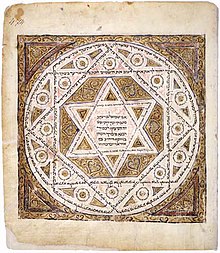Leningrad Codex

The Leningrad Codex (Codex Leningradensis) is the oldest surviving complete copy of the Masoretic text of the Hebrew Bible, dated 1008. (The Aleppo Codex is presumably a few decades older, but parts of it are missing.) The Biblia Hebraica Stuttgartensia (the edition of the Hebrew Bible most widely referred to by scholars and Bible translators) is an almost exact transcript. It contains the complete text of the Hebrew Bible (though the order differs slightly from most published Hebrew Bibles in that Chronicles precedes Psalms and Job comes before Proverbs). It also has extensive Masoretic notes (nikudot). The codex is written on parchment and bound in leather.
The Leningrad codex—a codex as opposed to a scroll— is so named because it has been housed at the Russian State Library in Saint Petersburg since 1863. After the Russian Revolution scholars renamed it the Leningrad Codex. At the Library's request Leningrad is retained in its name when Leningrad's original name was restored after the dissolution of the Soviet Union. The Leningrad Codex is preserved in the Russian National Library, accessioned as "Firkovich B 19 A". Its former owner, the Karaim collector Abraham Firkovich, left no word in his writings where he had acquired the codex, which was taken to Odessa in 1838 and later transferred to the Imperial Library in St Petersburg.
According to its colophon, it was copied in Cairo [1] from manuscripts written by Aaron ben Moses ben Asher. It has been claimed to be a product of the Ben-Asher scriptorium itself; however, there is no evidence that ben Asher ever saw it. Unusually for a masoretic codex, the same man (Samuel ben Jacob) wrote the consonants, the vowels and the Masoretic notes. It is believed to be the manuscript most faithful to ben Asher's tradition apart from the Aleppo Codex itself. There are numerous alterations and erasures, and it was suggested by Moshe Goshen-Gottstein that an existing text not following ben Asher's rules was heavily amended so as to make it conform to these rules.
The Leningrad Codex, in extraordinarily pristine condition after a millennium, also provides an example of medieval Jewish art. Sixteen of the pages contain decorative geometric patterns that illuminate passages from the text. The Signature Page shows a star with the names of the scribes on the edges and a blessing written in the middle.
In 1935, the manuscript was lent to the Old Testament Seminar of the University of Leipzig for two years while Paul Kahle used it in preparing the third edition of Biblia Hebraica (Stuttgart, 1937). Kahle's text was also used for Biblia Hebraica Stuttgartensia. The manuscript was earlier than the Hebrew manuscripts that had been used for the previous editions of the printed Hebrew Bibles by several hundred years.
External links
- Daniel D. Stuhlman, "Librarian's Lobby: The Leningrad Codex" (March 1998): occasioned by the photofacsimile edition
- The Leningrad Codex (West Semitic Research Project at USC)
- The Westminster Leningrad Codex, the electronic version of the Leningrad Codex maintained by the Westminster Hebrew Institute
